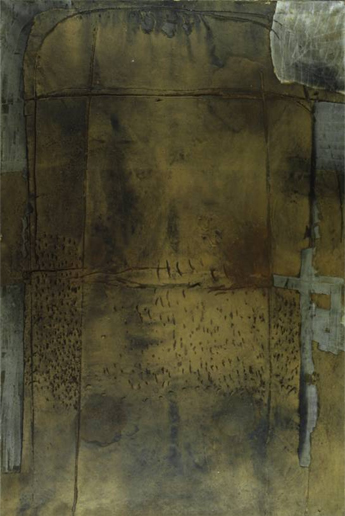Leonardo da Vinci once said that whenever he was stuck for an idea he would go out and stare at ''a wall covered with dirt''. In the chance configurations of stained, crumbling stucco he would find ''landscapes, battles, clouds, uncommon attitudes, humorous faces, draperies. Out of this confused mass of objects, the mind will be furnished with an abundance of designs and subjects perfectly new.''
Leonardo was not lacking in foresight, but even he probably never suspected that one day artists staring at the dirt-covered wall would see, not a random source-book of ideas, but an aesthetic ideal - a prompt for paintings that would, themselves, be as tough and sullenly ambiguous, as lacking in perspective or apparent coherence, as chunks of weathered masonry. For them, the found patterns on urban walls would exist not to be reconfigured, not to be reimagined into the grander forms of heroic figurative art, but to be replicated in all their dumb, prosaic solidity.
The Spanish artist Antoni Tapies holds the superstitious belief that ''our names influence our characters and our particular destinies''. It is not hard to see why. His own name is Catalan for ''walls'', and Tapies has been making paintings that look very much like walls for almost 40 years. The Tapies exhibition currently at the Serpentine Gallery is devoted to his first essays in wallness, mostly from the 1950s. These are the paintings which, when first seen in New York in 1959, were sniffily described by a reviewer for ArtNews as ''large cumbersome statements in dun colours, like sections of palaeolithic subway removed from environments where they might excite a passing interest''. That is a pretty good account of them, although allowances have to be made for American critical jingoism. The young Tapies's art is still impressive in...

First up against the wall
07-07-1992

